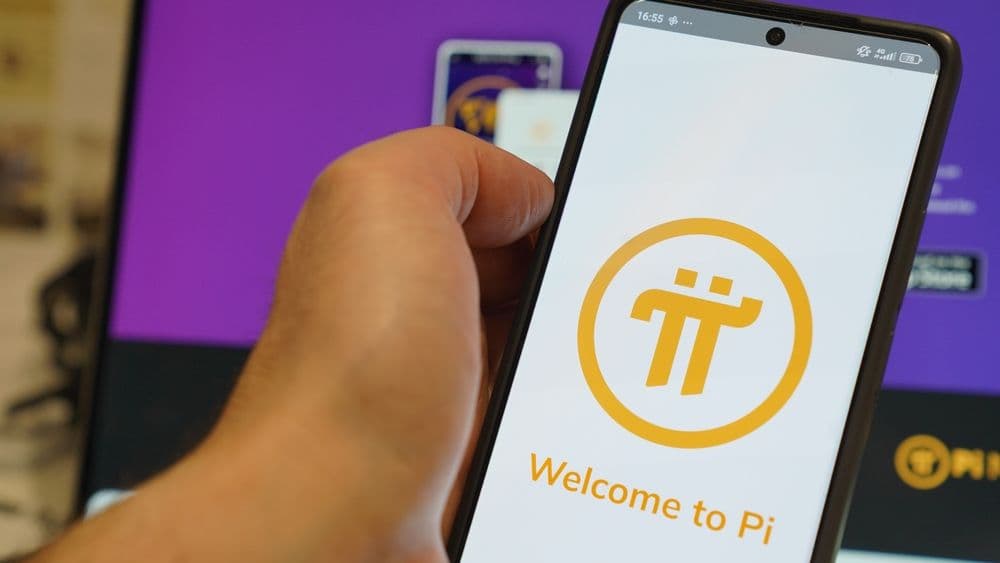Pi Network, the mobile-first blockchain project with over 50 million users worldwide, marked its annual “Pi2Day” celebration with a major shift from hype to utility, unveiling two key ecosystem features aimed at empowering community-led development and curation.
The new tools - Pi App Studio and Ecosystem Directory Staking - aim to deepen user engagement by giving everyday participants direct influence over the Pi app ecosystem, even if they lack technical experience. Alongside these, Pi Network also released several infrastructure updates, reaffirming its commitment to building a functional and accessible decentralized platform.
This year’s Pi2Day - named after the quirky math pun π × 2 = 6.28 (June 28) - was more than symbolic. It reflected a strategic inflection point for a network that’s often been accused of stalling at the pre-mainnet phase or overpromising without delivering real-world use cases.
The centerpiece of this year’s Pi2Day announcement is the Pi App Studio, an AI-driven no-code platform that enables anyone to build decentralized apps (dApps) within the Pi ecosystem simply by describing their idea in natural language. “You can type out your app concept, and the studio builds it for you,” said the Pi Core Team in the announcement. “No coding required.”
This represents a leap in accessibility for Pi developers - dubbed “Pioneers” - allowing even non-technical users to participate in building Web3 apps. The system abstracts away blockchain complexities like wallets, payment rails, user authentication, and on-chain interactions, embedding them behind the scenes so creators can focus on content and logic rather than smart contract development.
By using generative AI, Pi App Studio is expected to accelerate the expansion of its app ecosystem, especially in regions where developer resources are limited. It also opens doors for local entrepreneurs, educators, nonprofits, and creators who want to tap into the Pi community without expensive tech overhead.
Ecosystem Directory Staking: A Token-Backed Discovery Engine
In another move to reshape app discovery and incentivize authentic community engagement, Pi Network introduced Ecosystem Directory Staking - a feature that lets users and businesses “vote” for apps they trust by staking Pi tokens on them.
This replaces traditional ad-based visibility mechanisms with a community-curated ranking system. Projects that receive significant backing rise in the Ecosystem Directory based on the amount of Pi staked in their support.
Unlike social likes or fake reviews, this system ties attention to tangible commitment. Users must lock up real tokens to support apps, making it more difficult to manipulate rankings. This staking model echoes the core principles of proof-of-stake networks, where skin-in-the-game aligns incentives and raises the cost of dishonest behavior.
“This is about letting the community decide what deserves attention,” the Core Team said. “And doing it with real value.”
The staking feature also enables small teams with innovative ideas to gain early momentum without large marketing budgets, provided they can rally enough Pioneer support.
New Node Software, Onramp Tools, and Migration Upgrades
In addition to the flagship features, Pi Network also released a slate of infrastructure updates:
- A new version of Pi Node software was launched to improve Mainnet reliability, block propagation, and peer discovery.
- A third-party fiat-to-crypto onramp aggregator has been integrated into the app, simplifying how users can fund their wallets across various jurisdictions.
- .pi domain auctions have been extended due to high demand, enabling users to register Pi-native domains for future decentralized identity (DID) use cases.
- Mainnet migration improvements were rolled out to speed up the KYC and wallet claim process, which had previously faced bottlenecks for certain users.
These enhancements aim to bolster the network’s performance and usability as it prepares for broader open Mainnet adoption, an event the community has been anticipating since the project’s inception in 2019.
Pi2Day Ecosystem Challenge Encourages Community Participation
To promote active engagement with the new tools, Pi Network launched the Pi2Day Ecosystem Challenge, a campaign that encourages users to explore, test, and build using the new App Studio and staking interface. Participants can earn digital rewards and badges for their activity, which contributes to both personal rankings and broader community recognition.
This “build-and-earn” approach follows a broader trend across Web3 projects, where incentivized participation bridges the gap between user onboarding and product adoption. The Challenge also serves as a real-world test for Pi App Studio’s scalability and usability, as thousands of users begin generating app templates and staking Pi in support of their favorite projects.
After years of criticism for its long-running “enclosed Mainnet” model and lack of token liquidity, Pi Network is signaling a transition toward active ecosystem development, where tools and infrastructure meet real user demand.
While Pi remains enclosed - meaning it isn’t currently tradable on external exchanges and exists solely within the app ecosystem - this walled-garden approach has allowed the team to pilot utility without speculative volatility, a point often emphasized by the Core Team.
Still, the launch of products like App Studio and Directory Staking suggests that Pi is preparing for an eventual open Mainnet, where real-world assets, services, and payments can interface with the broader crypto economy.
A Pivotal Moment: Community as the New Growth Engine
What sets Pi Network apart is its grassroots-first growth model, built largely through a mobile-first app, social referrals, and regionally localized engagement. With over 50 million registered Pioneers, many in emerging markets, the network’s latent reach is enormous.
But reach alone isn’t enough. The launch of real tools that empower users to build, rank, and support apps shows Pi is now turning toward sustainable growth based on actual utility.
Whether this marks the beginning of a breakout phase or remains a tightly managed community experiment will depend on future updates - most notably the long-awaited open Mainnet launch and the public listing of Pi on crypto exchanges.

